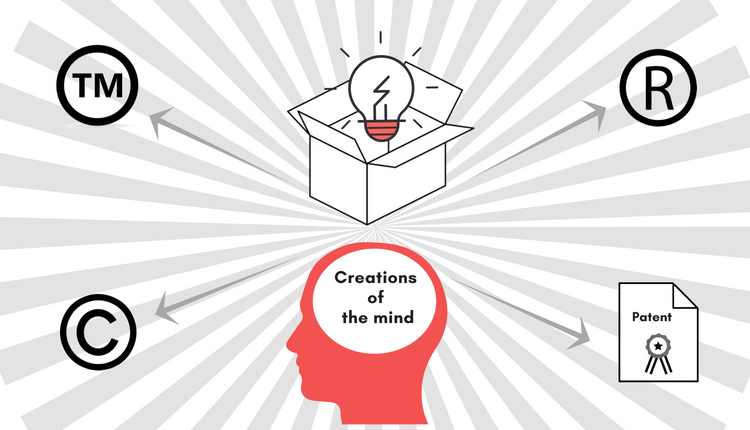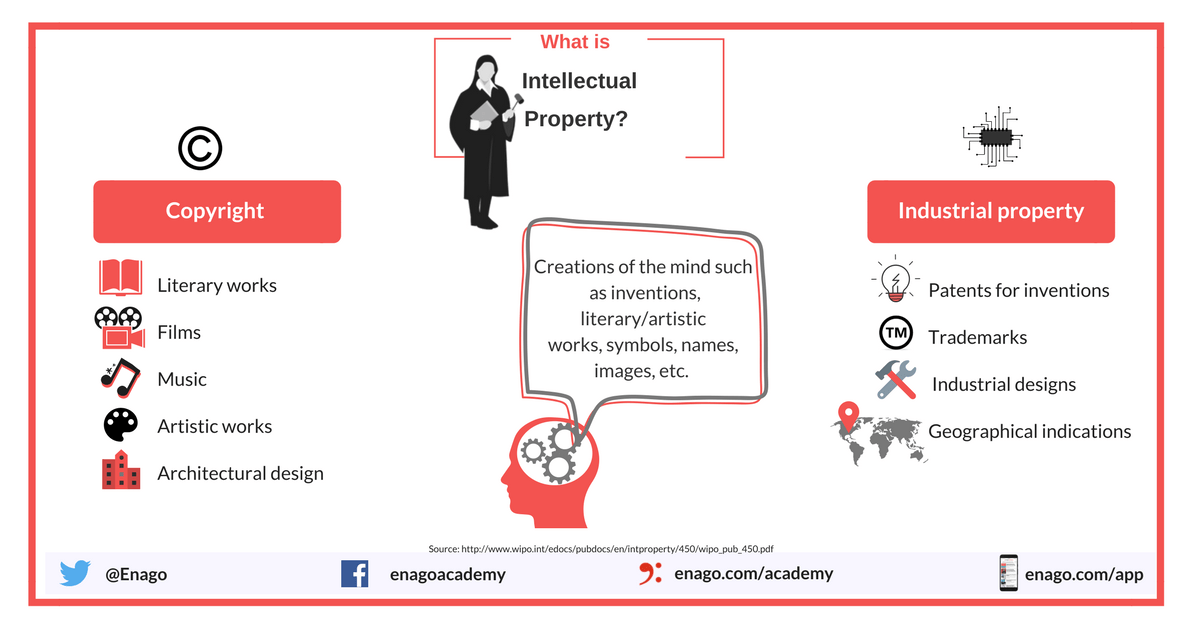Intellectual Property Rights: What Researchers Need to Know

Intellectual property rights help protect creations of the mind that include inventions, literary or artistic work, images, symbols, etc. If you create a product, publish a book, or find a new drug, intellectual property rights ensure that you benefit from your work. These rights protect your creation or work from unfair use by others. In this article, we will discuss different types of intellectual property rights and learn how they can help researchers.
Types of Intellectual Property Rights
There are two main types of intellectual property rights (IPR).
- Copyrights and related rights
- Industrial property
Copyrights give authors the right to protect their work.
It covers databases, reference works, computer programs, architecture, books, technical drawings, and others.
By copyrighting your work, you ensure that others cannot use it without your permission.
Industrial property rights include trademarks, patents, geographical indications, and industrial designs.
- A trademark is a unique sign used to identify a product or a service. It can be a single word or a combination of words and numbers. Drawings, 3-D signs, or even symbols can constitute a trademark. For instance, Google is a famous trademark. The trademark application can be filed at national or regional levels depending on the extent of protection required.
- A patent is an exclusive right to an invention that introduces a new solution or a technique. If you own a patent, you are the only person who can manufacture, distribute, sell, or commercially use that product. Patents are usually granted for a period of 20 years. The technology that powers self-driving cars is an example of a patented invention.
- A geographical indication states that a product belongs to a specific region and has quality or reputation owing to that region. Olive oil from Tuscany is a product protected by geographical indication.
- An industrial design is what makes a product unique and attractive. These may include 3-D (shape or surface of an object) or 2-D (lines or patterns) features. The shape of a glass Coca-Cola bottle is an example of the industrial design.

What Do I Need to Know About IPR?
Intellectual property rights are governed by WIPO, the World Intellectual Property Organization. WIPO harmonizes global policy and protects IPR across borders. As a researcher, you rely on the published work to create a new hypothesis or to support your findings. You should, therefore, ensure that you do not infringe the copyright of the owner or author of the published work (images, extracts, figures, data, etc.)
When you refer to a book chapter or a research paper, make sure to provide appropriate credit and avoid plagiarism by using effective paraphrasing, summarizing, or quoting the required content. Remember plagiarism is a serious misconduct! It is important to cite the original work in your manuscript. Copyright also covers images, figures, data, etc. Authors must get appropriate written permission to use copyrighted images before using them in the manuscripts or thesis.
How do you decide whether to publish or patent? Check your local IPR laws. IPR laws vary between countries and regions. In the US, a patent will not be granted for an idea that has already been published. Researchers, therefore, are advised to file a patent application before publishing a paper on their invention. Discussing an invention in public is what is known as public disclosure. In the US, for instance, a researcher has one year from the time of public disclosure to file a patent. However, in Europe, a researcher who has already disclosed his or her invention publicly loses the right to file a patent immediately.
IPR and Collaborative Research
IPR laws can impact international research collaboration. Researchers should take national differences into account when planning global collaboration. For example, researchers in the US or Japan collaborating with researchers in the EU must agree to restrict public disclosure or publication before filing a patent. In the US, it is common for publicly funded universities to retain patent ownership. However, in Europe, there are different options. An ideal collaboration provides everyone involved with the maximum ownership of patent rights. Several entities specialize in organizing international research collaborations. Researchers can also consider engaging with such a company to manage IPR.
What questions do you have about IPR? Have you faced any situation where you need to consider IPR issues when conducting or publishing your research? Please let us know your thoughts in the comments below.










Wow, I never knew that geographical indication can have a connection to intellectual property if it has distinctions that can be attributed to where it came from. After finishing my master’s degree, I think I’m going to be staying in the academe as a researcher so it’s quite helpful to know more about how the intricacies of IP can affect research. I hope I can one day attend a conference about IP to learn more about its modern day advancements.
I have invented – conceived – a training system. What do I have to do to achieve and retain ownership if I enroll in a university higher degree by research program to develop this idea?
Hi,
Thank you for sharing your query on our website. Regarding your query, most universities recognize as a general principle that students who are not employees of the university own the IP rights in the works they produce purely based on knowledge received from lectures and teaching. However, there may be some circumstances where ownership has to be shared or assigned to the university or a third party. These include cases when the student is being sponsored by the university, or the project is a sponsored research project or involves the academic staff of the university or university resources. If the training system conceived by you does not involve any of the above mentioned scenarios, ideally you should be able to retain its ownership. For more clarity you can check through the IP rules section of the concerned university.
Please let us know in case of any queries.